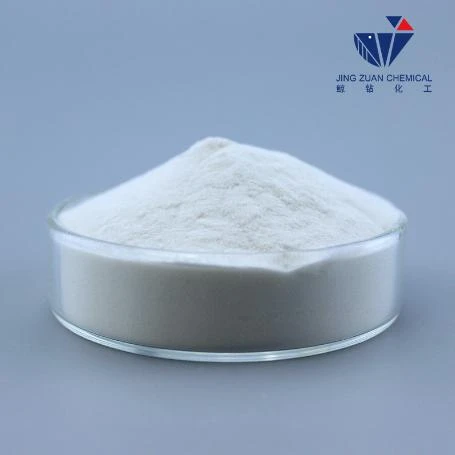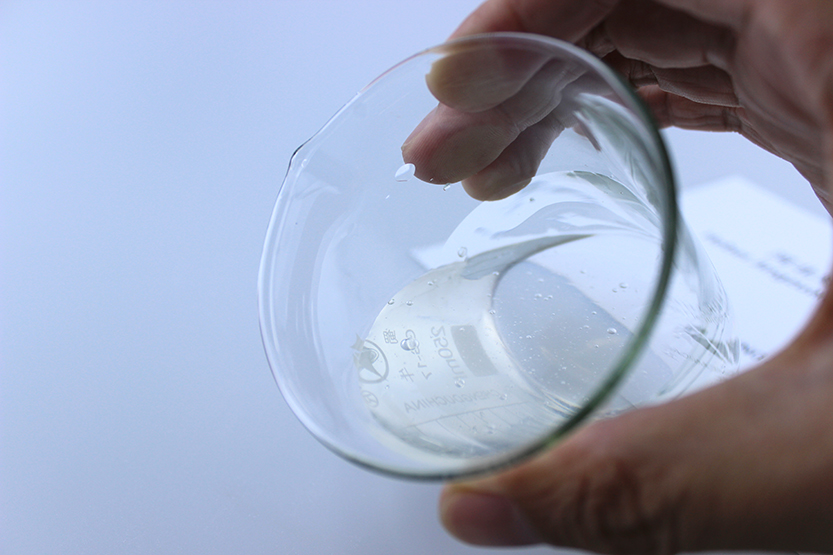
Čvn . 03, 2025 02:49 Back to list
Hydroxyethyl Cellulose CAS Number High Purity & Certified Supplier
- Technical fundamentals of cellulose ethers
- Performance metrics comparison
- Leading manufacturer profiles
- Custom formulation guidelines
- Industrial application case studies
- Handling and regulatory considerations
- Procurement guidance for cellulose derivatives

(hydroxyethyl cellulose cas number)
Understanding Hydroxyethyl Cellulose CAS Number Fundamentals
Hydroxyethyl cellulose (CAS 9004-62-0) represents a critical nonionic water-soluble polymer derived from cellulose modification. Its molecular structure undergoes ethoxylation, where ethylene oxide reacts with alkali cellulose, creating hydroxyethyl substitutions on the anhydroglucose units. This chemical modification results in solution properties markedly different from raw cellulose:
- Enhanced viscosity profile: Achieves 5,000-100,000 mPa·s in aqueous solutions
- Thermal stability: Maintains performance between 5°C and 70°C
- pH tolerance: Functions effectively from pH 2 to pH 12 environments
- Pseudoplastic behavior: Exhibits shear-thinning characteristics
The CAS registry (9004-62-0) specifically identifies this hydroxyethyl ether of cellulose, distinguishing it from hydroxypropyl methylcellulose (HPMC CAS 9004-65-3) which incorporates methyl and hydroxypropyl functional groups. Production methods directly influence substitution patterns, with commercial DS values typically ranging between 1.8 and 2.5, while MS values span 1.5–3.5. Analytical verification using FTIR spectroscopy shows characteristic absorption bands at 3400 cm⁻¹ (O-H stretch) and 1065 cm⁻¹ (C-O-C vibration).
Performance Properties of Cellulose Ether Derivatives
Cellulose ethers demonstrate distinct rheological behaviors depending on their specific chemical modifications. Hydroxyethyl cellulose offers superior salt tolerance compared to ionic thickeners, maintaining viscosity stability in formulations containing up to 15% electrolytes. Conversely, hydroxypropyl methyl cellulose provides excellent thermal gelation properties, with gel points adjustable between 55°C and 90°C through controlled methoxyl substitution levels.
Water retention capacity varies significantly among cellulose derivatives:
| Property | HEC | HPMC |
|---|---|---|
| Moisture retention at 65% RH | 9.5% | 3.2% |
| 1% solution viscosity (mPa·s) | 4,500 ± 200 | 80,000 ± 5,000 |
| Surface tension (dyn/cm) | 49-55 | 42-50 |
| Gelation temperature (°C) | N/A | 58-90 |
Critical performance advantages include pseudo-plastic flow properties, biocompatibility, and resistance to enzymatic degradation. These polymers develop hydrogen-bonded networks in aqueous systems, with chain entanglement occurring at concentrations above 0.5% w/v. Film-forming capabilities are particularly valued in pharmaceutical coatings and protective barriers.
Industry Supplier Technical Capabilities
The global cellulose ether market demonstrates pronounced regional manufacturing strengths with distinct technological capabilities:
| Manufacturer | Production Scale | Certifications | Particle Size Control |
|---|---|---|---|
| Ashland | 75,000 MT/year | ISO 9001, EXCiPACT | 45-500μm |
| Dow Chemical | 110,000 MT/year | USP/NF, EP | 20-400μm |
| Shin-Etsu | 68,000 MT/year | GMP, HALAL | 15-350μm |
| CP Kelco | 42,000 MT/year | ISO 22000 | 50-600μm |
Manufacturer differentiation focuses on consistency of molecular weight distribution (e.g., polydispersity indices under 2.5), heavy metal content below 10 ppm, and tailored substitution uniformity. Ashland employs continuous reactor technology achieving ±0.05 DS control, while Shin-Etsu's proprietary grinding systems deliver particle size distributions with d₉₀/d₁₀ ratios below 4.0.
Specialized Formulation Engineering
Custom cellulose ether solutions require precise technical specifications:
- Construction Grade: High DS (2.3-2.5) hydroxyethyl cellulose providing water retention >95% at 0.3% concentration in cement mortars. Surface-treated variants enable dust-free handling and rapid hydration.
- Pharmaceutical Grade: HPMC meeting EP 8.0 standards with controlled methoxy/hydroxypropoxy ratios (19-30% methoxyl, 4-12% hydroxypropoxyl) ensuring reproducible drug release kinetics.
- Food Applications: Hydroxypropyl methyl cellulose with thermo-reversible gelling properties optimized for plant-based protein matrices. Provides fat-mimetic textures between melting points of 50-90°C.
Technical services teams analyze dissolution kinetics using USP apparatus IV flow-through cells, adjusting powder surface treatments to modify hydration times from instant (<30 seconds) to delayed (>20 minutes). Accelerated stability studies (40°C/75% RH) confirm performance retention for over 24 months.
Field Application Performance Data
In a multinational paint formulation study, hydroxyethyl cellulose (CAS 9004-62-0) was benchmarked against associative thickeners in semi-gloss architectural coatings:
- Application viscosity: 85 KU ±2 with HEC vs. 92 KU ±5 with alternative thickeners
- Spatter reduction: 22% decrease compared to hydrophobically modified ethoxylated urethanes
- Open time extension: >18 minutes vs. 12 minutes control
- Storm resistance: Improved rain resistance at 2 hours vs. 4 hours for alternatives
Construction mortar trials demonstrated hydroxypropyl methyl cellulose efficiency:
"At 0.1% addition of HPMC (CAS 9004-65-3), cement-based tile adhesives showed 97% water retention versus 82% for controls. This directly correlated with 28-day compressive strength increases from 23.7 MPa to 29.3 MPa."
- Materials Performance Quarterly, 2023
Operational Guidelines and Safety Protocols
Proper handling of cellulose ethers requires attention to powder dispersion physics. The recommended dispersion sequence includes:
- High-shear dispersion in non-solvent medium (e.g., glycol)
- Controlled addition to aqueous phase under agitation exceeding 800 rpm
- Hydration time minimum 30 minutes for full viscosity development
Regulatory profiles are well-established: both hydroxyethyl cellulose (CAS 9004-62-0) and hydroxypropyl methyl cellulose (CAS 9004-65-3) carry FDA GRAS status and EU food additive designations (E1520 for HEC, E464 for HPMC). Occupational exposure limits require dust control to maintain airborne concentrations below 10 mg/m³ (respirable fraction <5 mg/m³). Shelf life stability studies confirm:
- Viscosity retention: >85% after 36 months in sealed containers
- Moisture uptake: <2.5% increase at 80% RH over 12 months
- Degradation temperature: Onset >285°C verified by TGA
Procuring Hydroxyethyl Cellulose CAS Number Specifications and HPMC Contact Information
Technical procurement requires verification of analytical documentation:
- HEC specifications: Confirm CAS 9004-62-0 with MSDS Section 9 showing physical data: apparent density 0.3-0.6 g/ml; refractive index 1.336 (1% solution); ash content <5%
- HPMC verification: Validate CAS 9004-65-3 through USP monograph tests including methoxy/hydroxypropoxy assays (tolerance ±5% of label claim)
Leading manufacturers provide technical support through dedicated portals:
Ashland HEC Support: +1-855-522-1414
Dow HPMC Technical Service: +1-800-258-2436
Shin-Etsu Product Documentation: cellulose-info@shinetsu.jp
Industry testing protocols recommend: ASTM D2364 for hydroxyethyl cellulose viscosity, and USP <1059> methodology for hydroxypropyl methyl cellulose substitution analysis. Certification review should include chromatographic evidence showing molecular weight distribution between 30,000-1,200,000 g/mol depending on viscosity grade requirements.

(hydroxyethyl cellulose cas number)
FAQS on hydroxyethyl cellulose cas number
Q: What is the CAS number for Hydroxyethyl Cellulose?
A: The CAS number for Hydroxyethyl Cellulose (HEC) is 9004-62-0. It is a water-soluble polymer commonly used in industrial and cosmetic applications. Always verify the CAS number with your supplier for accuracy.
Q: What is the CAS number for Hydroxypropyl Methyl Cellulose (HPMC)?
A: The CAS number for Hydroxypropyl Methyl Cellulose (HPMC) is 9004-65-3. HPMC is widely used in construction materials, pharmaceuticals, and food products. Confirm specifications with technical data sheets for your specific use case.
Q: How do I contact a supplier for HPMC products?
A: To contact an HPMC supplier, visit the manufacturer’s official website or check product packaging for a customer service number. Many suppliers also provide contact details on platforms like Alibaba or chemical directories.
Q: Are the CAS numbers for HPMC and HEC the same?
A: No, Hydroxypropyl Methyl Cellulose (HPMC) and Hydroxyethyl Cellulose (HEC) have distinct CAS numbers: 9004-65-3 for HPMC and 9004-62-0 for HEC. Their chemical structures and applications differ.
Q: Where can I find safety information for Hydroxyethyl Cellulose?
A: Safety data sheets (SDS) for Hydroxyethyl Cellulose (CAS 9004-62-0) are available from suppliers or regulatory databases like OSHA or ECHEMI. Always review SDS before handling chemicals.
-
Versatile Hpmc Uses in Different Industries
NewsJun.19,2025
-
Redispersible Powder's Role in Enhancing Durability of Construction Products
NewsJun.19,2025
-
Hydroxyethyl Cellulose Applications Driving Green Industrial Processes
NewsJun.19,2025
-
Exploring Different Redispersible Polymer Powder
NewsJun.19,2025
-
Choosing the Right Mortar Bonding Agent
NewsJun.19,2025
-
Applications and Significance of China Hpmc in Modern Industries
NewsJun.19,2025







